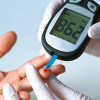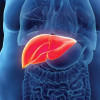
Epidemiological and Radiological Assessment of Ischemic Stroke in Indian Adults Using TOAST Criteria
Stroke continues to be a leading cause of morbidity and mortality globally, with a growing incidence in India that signals urgent public health concern. A cross-sectional study conducted at Dr. D. Y. Patil Medical College, Hospital, and Research Centre, Pune, between January 2023 and January 2024, offers valuable clinical insights into the risk factors, etiological classification, and radiological patterns associated with stroke in an Indian cohort.
The study enrolled 100 adult patients presenting with clinically and radiologically confirmed cerebrovascular accidents (CVAs), excluding cases with head trauma. Diagnostic work-up included routine biochemical assessments, CT, MRI with angiography or venography, and bilateral carotid Doppler studies. Stroke subtypes were categorized using the Trial of Org 10172 in the Acute Stroke Treatment (TOAST) classification system.
Of the participants, 84% were male, and 44% were over 60 years. Hypertension was identified as the most prevalent risk factor (75%), with a higher prevalence among males (62%). Smoking (51%) and alcohol use (50%) were significant contributors. Additional risk factors included dyslipidemia (39%), diabetes mellitus (33%), chronic kidney disease (11%), and ischemic heart disease (10%). Ischemic strokes accounted for the majority of cases (80%), with infarcts predominantly affecting the frontal (41%), parietal (37%), occipital (27%), and temporal (26%) lobes. According to the TOAST classification, the most common etiological categories were a stroke of undetermined etiology with multiple possible causes (32%) and large artery atherosclerosis (30%).
The findings emphasize the critical role of modifiable risk factors—particularly hypertension, tobacco and alcohol use, and hyperhomocysteinemia—in stroke pathogenesis. The predominance of ischemic events localized to key cerebral regions highlights the need for early identification and targeted intervention.
This study underscores the importance of comprehensive risk factor management—including blood pressure control, smoking cessation, alcohol moderation, and treatment of metabolic comorbidities—as an essential strategy to reduce stroke incidence and improve patient outcomes. Additionally, recognizing gender disparities and employing individualized, multidisciplinary care approaches may further enhance stroke prevention and management in the Indian context.
Source: . 2024;16(9):e68433.








Please login to comment on this article